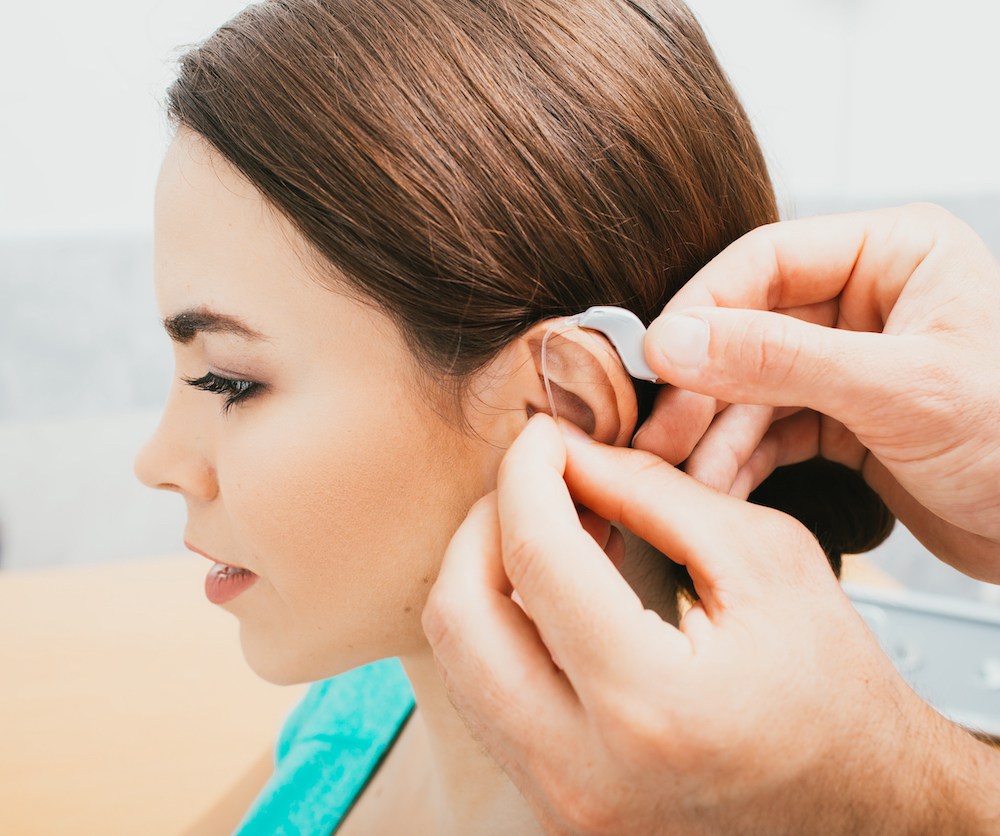The Connection Between Hearing Health and Emotional Well-Being
Your hearing health and emotional well-being are more linked than many

By: admin | September 25, 2024
When you go for a hearing assessment, the results can sometimes seem complicated or hard to decipher. One of the key tools used to help you understand your hearing abilities is an audiogram, a graph that maps out your hearing levels across various sound frequencies. It helps illustrate which frequencies you hear well and which might be more difficult for you. The audiogram gives your audiologist a detailed look at the specific areas where your hearing may need assistance, but interpreting this graph on your own can be tricky.
The good news is that your audiologist is there to guide you through the process, helping to break down each part of the test results. They’ll explain what the graph means in simple terms and discuss how it applies to your everyday life, like how well you might hear in noisy environments or recognize speech. This collaborative review will not only help you understand the extent of your hearing loss, if any, but also guide you toward personalized hearing solutions. Understanding your audiogram is an essential step in managing your hearing health, ensuring that the treatment you receive is tailored to your individual needs.
A hearing test is a simple, non-invasive process designed to assess how well your ears are functioning. You’ll typically be in a quiet, sound-treated room to block out any outside noise that could affect the results. During the test, you’ll wear headphones or earplugs connected to an audiometer, which is the device used to measure your hearing ability. The process is painless and straightforward. Your audiologist may opt to give you one or more of the following assessments to get a better grasp on your hearing health:
Several factors can influence the accuracy of hearing test results, making it essential to ensure that the test conditions are optimal. One significant factor is environmental noise. Even in soundproof rooms, unexpected background noise from the surrounding environment can interfere with the test, leading to inaccurate results. This is especially true if the noise is similar in frequency to the sounds being tested.
Health conditions can also impact hearing test outcomes. If you’re experiencing a cold, ear infection or sinus issues at the time of the test, the results might reflect temporary hearing loss. Similarly, conditions like earwax buildup or fluid in the middle ear can reduce sound transmission, giving the impression of a more severe hearing issue than is truly the case.
Your level of focus and understanding during the test can affect results too. If you’re distracted, tired or unsure of the test instructions, you might not respond to certain tones, skewing the results. Additionally, medications can play a role. Some medications, especially ototoxic ones, can temporarily or permanently affect hearing and distort the results of your test. These factors highlight the importance of addressing any health concerns and ensuring you’re fully engaged during the exam to get the most accurate picture of your hearing abilities.
At first glance, an audiogram may seem like a complex graph, but with some guidance, it becomes much easier to understand. After your hearing test, your audiologist will provide you with a copy of your audiogram results, which is essentially a visual representation of your hearing ability. The audiogram has two axes – one measuring sound volume (in decibels or dB) along the vertical axis and the other measuring sound frequency (in hertz or Hz) along the horizontal axis. Decibels indicate how loud a sound needs to be for you to hear it, while hertz represents the pitch or frequency of the sound, with low-pitched sounds on the left side of the graph and high-pitched sounds on the right.
On the audiogram, you’ll also see two different symbols for each ear – typically a blue “X” for the left ear and a red “O” for the right ear. These marks are plotted along the graph to show the softest sounds you can hear at different pitches and volumes. If these symbols fall toward the top of the chart, it means you can hear softer sounds, indicating normal hearing. If they appear lower on the graph, it shows that louder sounds are required for you to detect those frequencies, signaling some degree of hearing loss.
The shape and positioning of these lines on the audiogram reveal a lot about the type and extent of hearing loss. Symmetrical hearing loss means that both ears are functioning similarly, so the lines will follow a similar pattern on the graph. Asymmetrical hearing loss occurs when one ear performs differently than the other, resulting in distinct, separate patterns. Depending on where the symbols fall – whether at lower decibel levels or only with higher-pitched frequencies – your audiologist can identify whether your hearing loss affects low, mid or high frequencies, or a combination of all three.
Understanding your hearing test results is crucial for effective hearing management, and your audiologist is your best resource for clarifying any uncertainties. After receiving your audiogram, it’s essential to engage in a dialogue with your audiologist to ensure you fully comprehend what the results mean for your hearing health. Asking the right questions can help you gain valuable insights into your hearing abilities and guide you in making informed decisions about your hearing care.
After undergoing a hearing test, discussing treatment options with your local audiologist is a critical next step. Your audiologist will help you understand your test results in detail and explore the best approaches to address your hearing needs.
The first aspect of this discussion will involve reviewing the specifics of your audiogram. Your audiologist will explain how the results indicate the type and degree of hearing loss you have, including which frequencies are most affected. Based on these findings, your audiologist will recommend various hearing aids or assistive listening devices tailored to your needs. They will discuss the features of different models, like noise reduction, Bluetooth connectivity, or directional microphones, and how these features can enhance your hearing experience in various environments.
Additionally, your audiologist will address any lifestyle factors that may influence your treatment options. For instance, if you lead an active lifestyle or work in a noisy environment, they may suggest hearing aids with robust noise-cancellation features or other protective technologies. They will also discuss the benefits and limitations of each option, ensuring you understand how each device will perform in real-world scenarios.
Your audiologist will also consider your personal preferences and comfort. They may provide guidance on choosing between different styles of hearing aids, like behind-the-ear or in-the-canal models, based on your aesthetic preferences and comfort level.
Finally, your audiologist will discuss the fitting process and what to expect during follow-up appointments. This includes the steps for adjusting the hearing aids to your specific needs and addressing any concerns or adjustments that might be necessary after you begin using them.
Remember, it’s not just about understanding these terms; it’s about applying this understanding in your daily life. If you find yourself struggling with certain aspects of your hearing or if you have questions about your test results, don’t hesitate to reach out for professional help. Our team at Salyer Hearing Center is always ready and eager to assist.
At our Candler, NC location, we offer personalized consultations and comprehensive services tailored to address all aspects of your hearing health. To learn more or schedule an appointment, please call us at (828) 333-5310.

Your hearing health and emotional well-being are more linked than many
By: admin | November 18, 2025

When you think about hearing loss, you probably focus on the obvious
By: admin | September 24, 2025

Technology has changed almost everything about how we live, work and take
By: admin | May 23, 2025
We are proud to serve the people of Western North Carolina with industry leading technologies in our three locations across the region: Candler, Sylva, Franklin and Murphy. Call us and join our family for a lifetime of better hearing.
